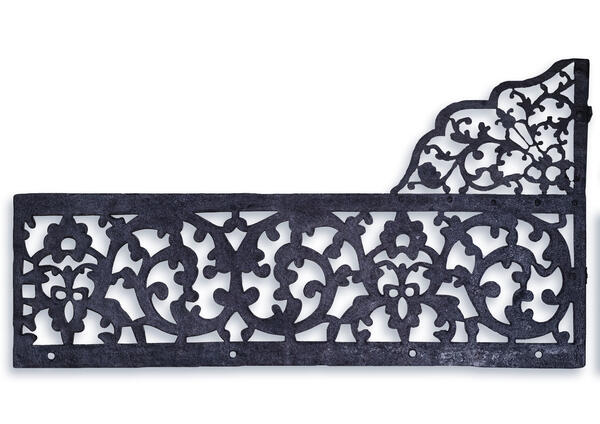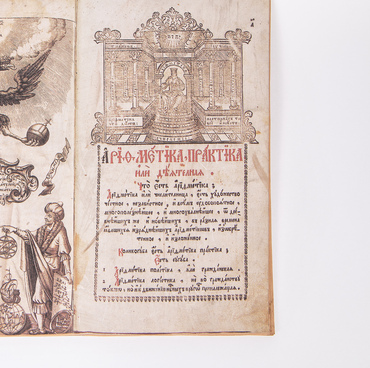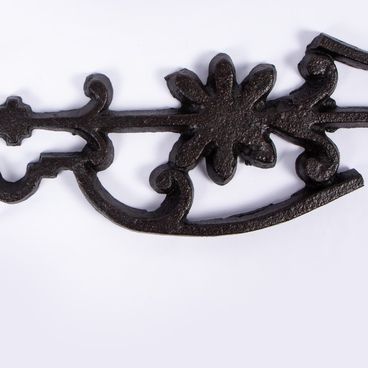The roof ridge is an important element, literally the crown of the roof, the peak of its structure, that is not just decorative, but also functional. It makes the building look perfect and complete. The fragment that is currently on display in the museum used to decorate the porch of the Leaning Tower in Nevyansk.
The ridge on the tower’s porch was made of rolled thin sheet iron. Rolling is a mechanical process of metal deformation. As a result, the thickness of the metal sheet decreases and its length increases. Rolling is carried out on a rolling mill under pressure from rotating drive rollers. Industrial rolling of iron began around the 18th century. In Russia, it was especially widely used at Ural plants.
During the time of the Demidovs, the Nevyansk plant operated a flattening and cutting factory equipped with rolling mills. They made it possible to produce a sheet of iron that was completely uniform in both thickness and width. Such iron has always had an advantage and the sales were good.
Factories operated on water energy, and the dam was a vital factory facility. Water from the dam flowed through two working slots: “blast furnace” and “large”. Under strong pressure, it passed through the “lar” (a reservoir-water conduit made from logs) and through branch wells to the gutters. From the gutter, under pressure, water fell onto the “feathers” (blades), rotating the water wheel and with it the wooden shaft on which it was mounted. In turn, a cast-iron barrel with “fists” mounted on a shaft drove the factory equipment through a drive system.
The roof ridge features an openwork floral pattern made using the technique of cutting through. The craft of making openwork metal objects appeared a long time ago and became part of the decorative and applied arts associated with blacksmithing. The main technique and principle for making perforated iron pieces is cutting a design into a sheet using choppers, chisels, and hammers. The burrs remaining after cutting were filed with various tools. Metal sheets for cutting had to be soft and pliable.



